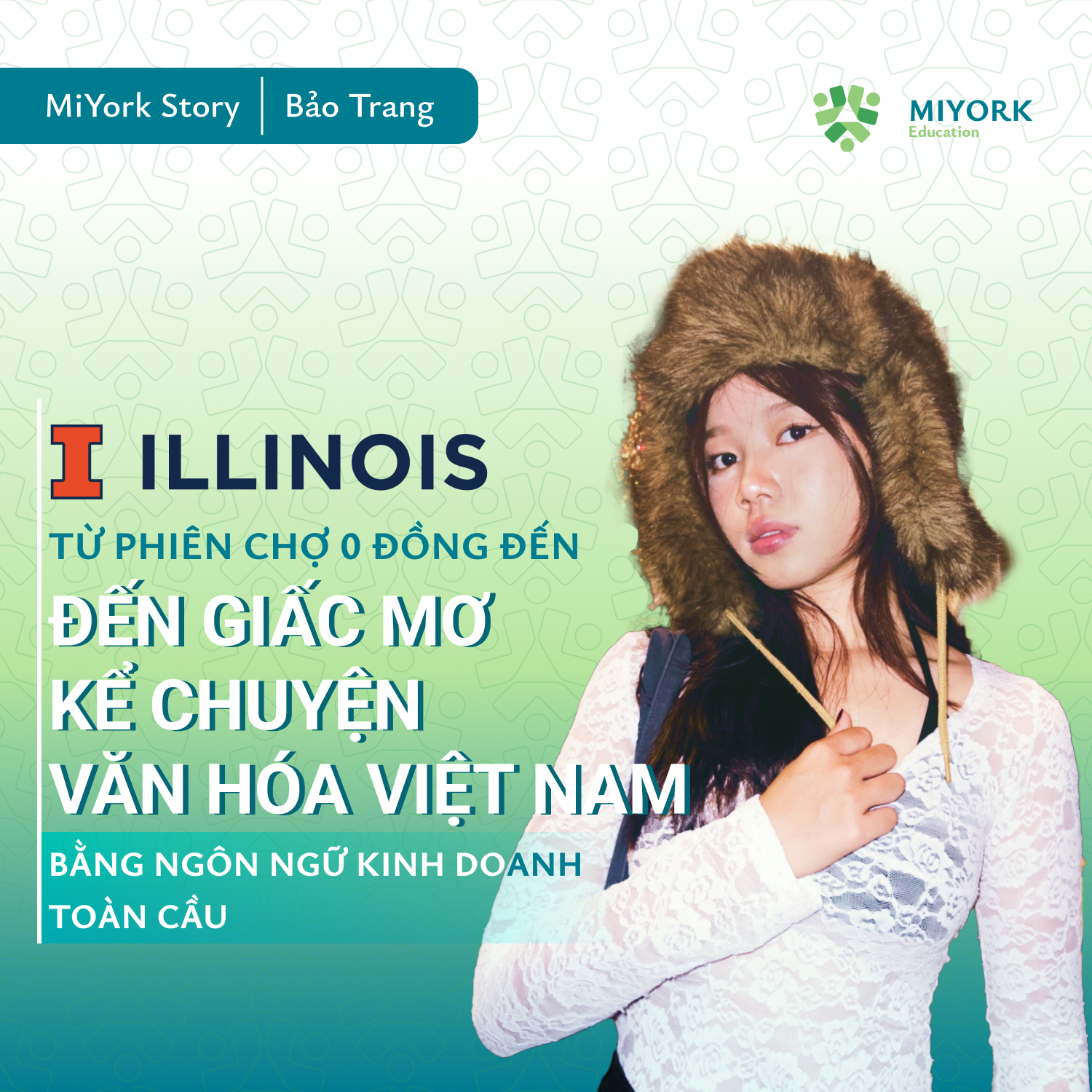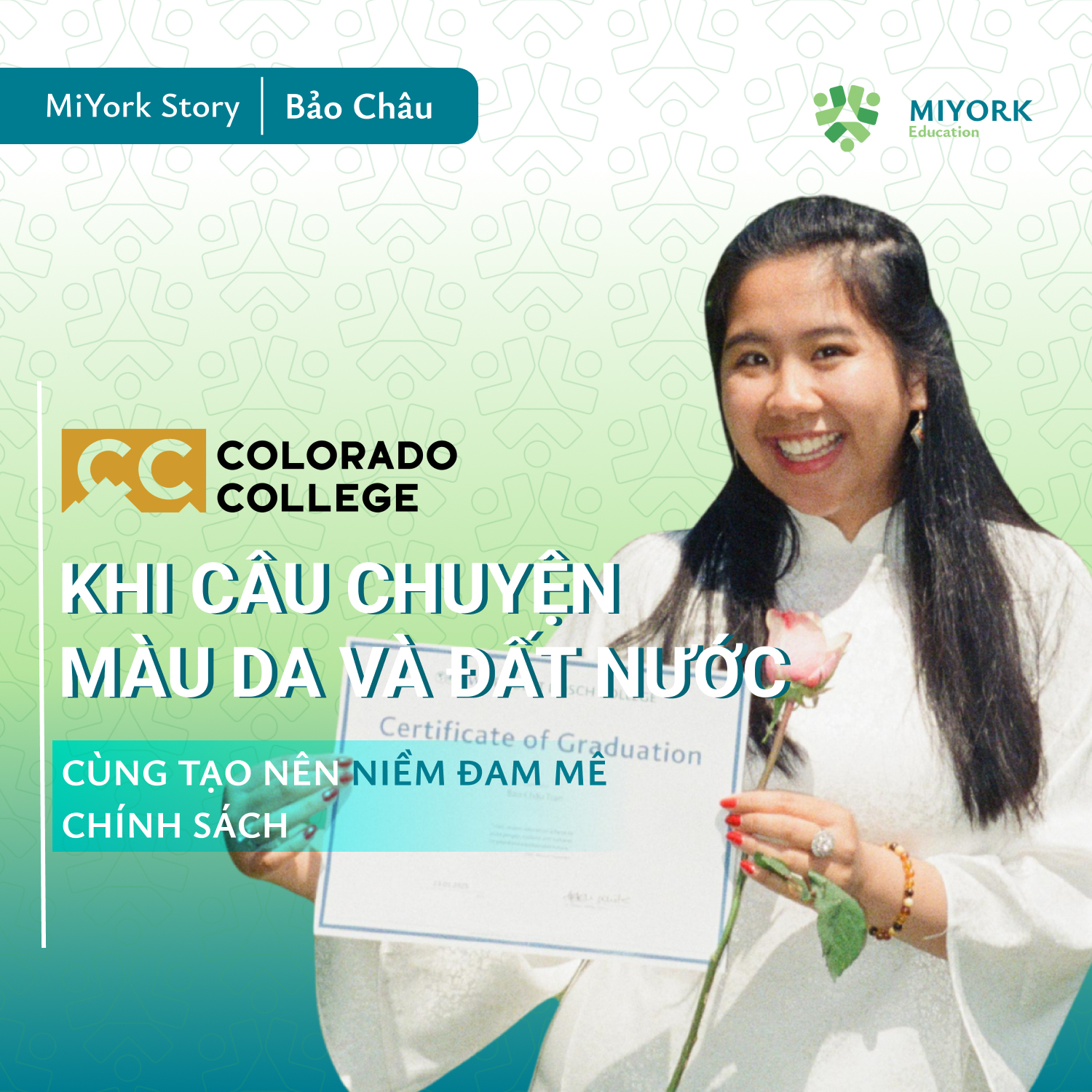Đức Thiện Wins Full Scholarship to Macalester College Through Interdisciplinary Thinking and Global Spirit

Hailing from Vietnam’s majestic Central Highlands, Đức Thiện carries a vision of personal and national growth in the Era of Vietnam’s Global Ascent. His transformative educational journey began at UWC Changshu China, an international high school twice nominated for the Nobel Peace Prize, where he immersed himself in global cultures and innovative learning. By embracing interdisciplinary studies, Thiện discovered connections across fields and learned how to translate knowledge into meaningful actions that benefit the community.
This remarkable path led Đức Thiện to secure a prestigious full scholarship to Macalester College (#26 LAC), a leading institution in international studies, economics, and social sciences, and alma mater of Kofi Annan, former UN Secretary-General and Nobel Peace Prize laureate. Let’s delve into his inspiring story with MiYork.
Understanding Differences, Building Connections, and Unlocking Interdisciplinary Thinking
Dreaming of becoming a diplomat who bridges Vietnam to the world, Đức Thiện worked tirelessly to earn a place at UWC Changshu—one of the most prestigious high schools globally. He believed that only by engaging with an international community and learning from peers from over 80 countries could he expand his worldview and truly understand diverse cultures.
Here, diplomacy lessons were not taught through textbooks but everyday interactions. For instance, he shared a classroom with a Muslim friend who wore a hijab and observed unique daily rituals like praying five times a day. Initially unfamiliar with such traditions, Thiện soon realized that each choice stems from a deep system of values and personal beliefs. For his friend, the hijab was not just religious attire but a proud expression of identity. These encounters taught Thiện that true connection starts with listening, understanding others’ perspectives, and approaching differences with respect and openness.
This mindset shaped his academic journey as he sought to become a connector: between nations and between policies and people. Yet, navigating the liberal curriculum at UWC was not easy. He switched subjects three times, wrestling with the intersection of his passions and strengths. However, through reflective guidance from mentors like Khoa and Tuyết, he learned that no knowledge is wasted. Whether studying chemistry or economics, each discipline contributes to a holistic view of the world.
For him, interdisciplinary thinking is not just an academic concept but a way to better understand the world and contribute to its improvement.

An Interdisciplinary Approach to Real-World Action
Interdisciplinary thinking not only broadened Thiện’s worldview but also became his tool for transforming community aspirations into tangible actions.
At UWC Changshu, he was one of just 15 students globally selected for the Nobel Innovation Program, a prestigious course in mathematics and economics taught by Harvard economist and Nobel laureate Eric Maskin. Initially, Thiện saw economics as dry numbers and models. But Maskin’s Mechanism Design Theory showed him that economics could reshape systems to be fairer and more efficient. Inspired by examples like the U.S. mechanism generating over $7 billion, Thiện began envisioning how similar models could address challenges in the Central Highlands—optimizing public transportation, reducing emissions, and solving pressing social issues.
Thiện’s ongoing research project under Maskin’s mentorship explores applied mathematics and economics, aiming to create systematic change in Vietnam’s future.
Back home in the Central Highlands, he applied this interdisciplinary spirit as Director of the Youth Innovation Summer Camp in Đắk Lắk. To challenge stereotypes about Vietnam’s indigenous communities, he used a multidimensional approach combining reflective education, media literacy, field-based anthropology, and sustainable tourism. Participants were guided to replace biased preconceptions with authentic interactions by visiting ethnology museums, interviewing locals involved in ecotourism, and living within indigenous communities.
Thiện believed firsthand experiences helped bridge the gap between online perceptions and real life, using diverse fields like culture, communication, and tourism to foster understanding. To ensure inclusivity, the camp provided full scholarships for underprivileged students, embodying Thiện’s belief in the “pay-it-forward” principle—spreading good deeds across generations.
Once again, liberal education and interdisciplinary thinking equipped Thiện with tools to transcend personal limitations, view issues systemically, and act with profound social responsibility. His journey reflects a transformation—from an international student to a global citizen committed to creating positive change.

From Showcasing a Unique Global Spirit to Earning a Full Scholarship
While preparing his application to Macalester College, Thiện knew that grades and essays alone could not convey his core value of internationalism. For him, global spirit meant more than “studying abroad”; it was about empathy, connection, and communication beyond language, culture, and background.
To express this, Thiện submitted an additional self-introduction video. He proudly spoke English with his Central Highlands accent, embracing his roots rather than masking them. He also used international sign language and translated the entire video himself, highlighting his belief that language—spoken or signed—represents the worldview of a community.
Through this creative approach, Thiện demonstrated his skills, ideals, and identity, earning Macalester’s highest full-ride scholarship. This included tuition, living expenses, meals, airfare, a MacBook, and thousands of dollars in research grants annually.
MiYork believes that with such authenticity, depth, and determination, Đức Thiện will continue spreading his unique vision of internationalism far and wide.













